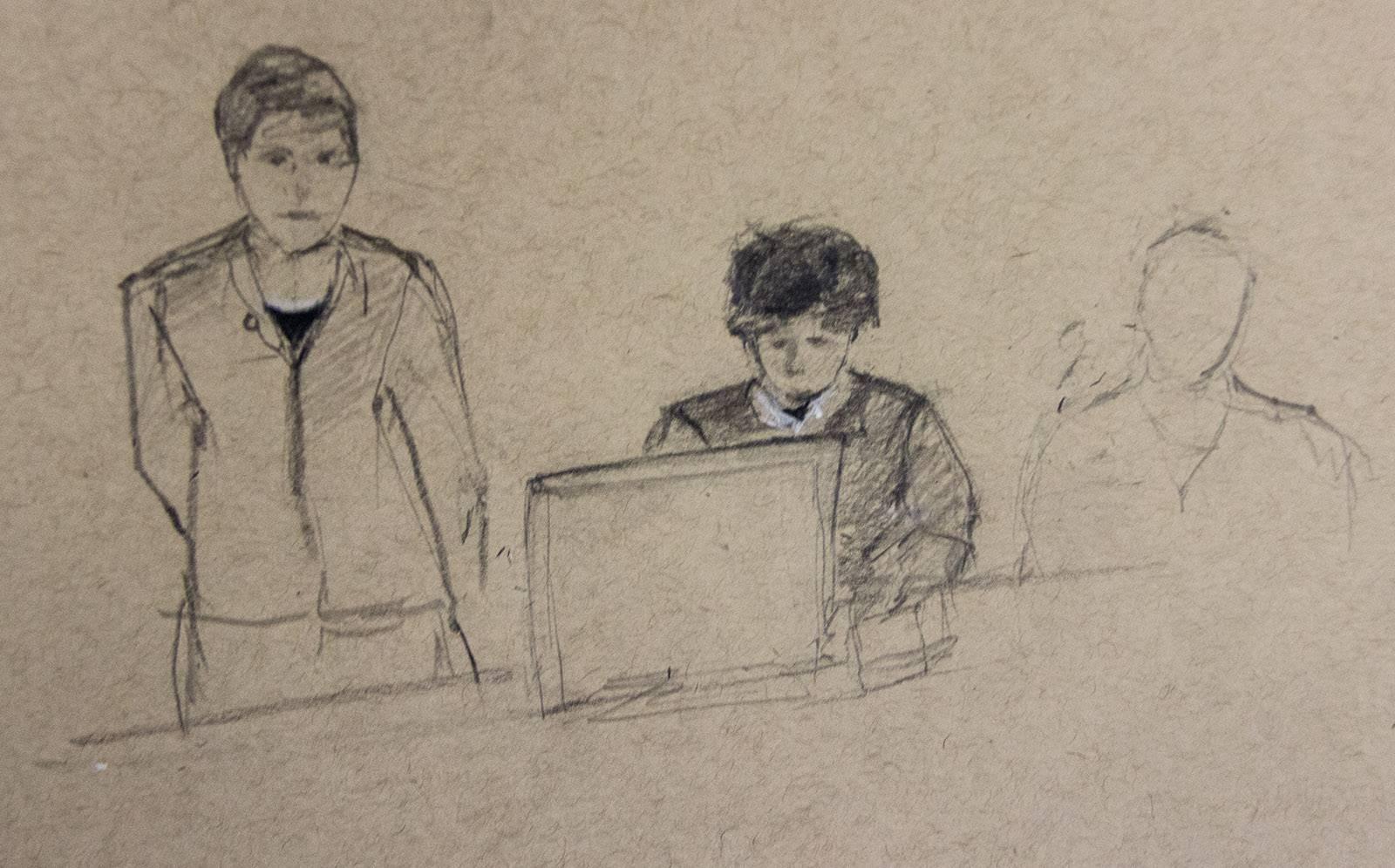The Boston Marathon bombing trial came to an abrupt halt at 1 p.m. on Tuesday, as U.S. District Judge George O’Toole and the council took a recess to visit the boat in which alleged Boston Marathon bomber Dzhokhar Tsarnaev had been found in Watertown days after the initial attack. The recess was announced after much deliberation regarding Tsarnaev’s alleged Twitter accounts and the testimonies of multiple FBI agents, who discussed the process used to gather and maintain evidence for the trial.
Tsarnaev, 21, is allegedly responsible for, with his brother Tamerlan, placing two bombs near the finish line of the Boston Marathon on Boylston Street on April 15, 2013 that killed three and injured more than 260. He is pleading not guilty to all 30 federal counts for which he is being tried.
The prosecution showed images of the boat to the jury in court on Tuesday morning, revealing the alleged note from the defendant, written in pencil, covered in what appear to be his own blood stains and surrounded by bullet holes allegedly shot by law enforcement officers from the outside of the vessel.
The message Tsarnaev allegedly scribed began with the phrase, “I am jealous of my brother who ha(bullet hole) ceived the reward of jannutul Firdaus (inshallah) before me. I do not mourn because his soul is very much alive.”
The note also stated, “I bear witness that there is no God but Allah and that Muhammad is his messenger,” and later, “we Muslims are one body, you hurt one you hurt us all.”
In conclusion, Tsarnaev allegedly wrote, “Now I don’t like killing innocent people it is forbidden in Islam but due to said (bullet hole) it is allowed.”
The images of the boat were presented to the jury after a cross-examination of Monday’s final witness, FBI Agent Steven Kimball.
In the cross-examination, continuing from the initial examination by the prosecution on Monday, the defense argued that the defendant had tweeted multiple song lyrics, rather than his own prose.
The defense stated that, in fact, the Russian-to-English translated phrase, “I shall die young” comes from a Russian rap song. Tsarnaev had previously tweeted lyrics to a song by Eminem, as well as one other rap artist. In many cases, Tsarnaev tweeted YouTube links to these songs, which Kimball stated he and the prosecution team had not investigated. The defense also showed Tsarnaev’s alleged tweets regarding studying, homework and the gym, arguing that his Twitter is similar to that of a normal teenager’s.
Tsarnaev had also allegedly tweeted, “God hates dead people … Lol those people are cooked.” The defense recognized “God hates dead people” as a quote of the Westboro Baptist Church, who planned to protest at the bombing victims’ funerals. The defense argued that “cooked” to some extent meant “crazy.”
Defense attorney Miriam Conrad also said the photo of Mecca on the @Al_FirdausiA Twitter account is actually a photo of another city.
After this examination of Kimball, several other FBI special agents took the stand Tuesday to discuss the processes of securing evidence and conducting operational projects.
Jeffrey Rolands, the special agent who acted as the team leader for Scene A of the crime, has been working as a DNA analyst for several years. His role, he said, was to “ensure the proper collection and preservation of the evidence with regard to the crime scene.”
“This included the proper collection and labeling of evidence,” he said.
Items were recovered from rooftops, the ground, from ledges and from the Boston Public Library. They were then labeled and sent to Black Falcon, a warehouse on the Boston seaport that had been transformed into the investigative laboratory for this case.
FBI Special Agent Kristen Koch was responsible for the set up and overseeing of the evidence-processing center at Black Falcon. She determined which evidence should be prioritized. A chain of custody, or a list of each person who had handled the piece of evidence, was created for each item.
Michael Macias, who works at the FBI lab, was responsible for handling any evidence that the bombs themselves cast onto the crime scene.
“The initial examination is just to document the state of the item as it comes in and the general description as the item as we’ve received it,” he said.
FBI Special Agent Jason Costello of the Evidence Response Team responded to Boylston Street on April 16, 2013. He was responsible for surveying the area to create digital images and diagrams of the crime scene.
“My data, when I produce it, and the equipment that I use, essentially creates a very crude sketch,” he told the jury. “Then, when they create their diagram or their product, I can compare.”
FBI Special Agent Sarah De Lair was responsible for the biological recovery of body parts and tissue, she said.
“Throughout the week of us processing the scene, we would be calling the medical examiners office multiple times a day so we could collect tissue,” she said.
The bodies of Krystle Campbell, Martin Richard and Lingzi Lu were still on the scene when De Lair arrived.
The case of Dzhokhar Tsarnaev resumed on Wednesday morning.




















































































































